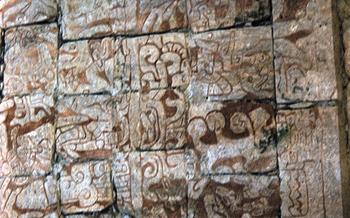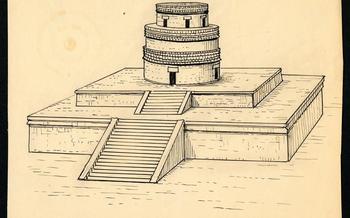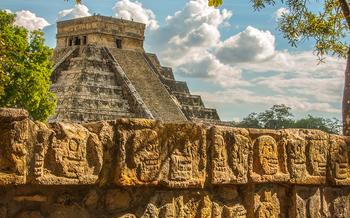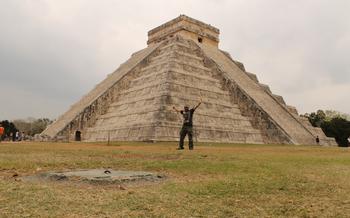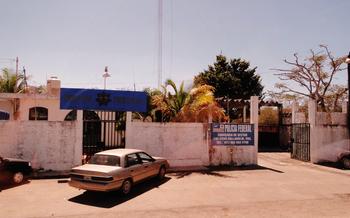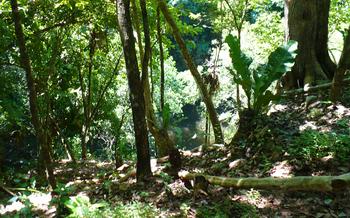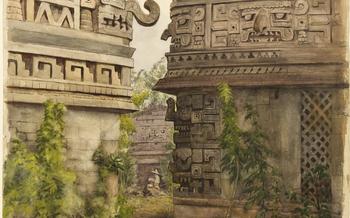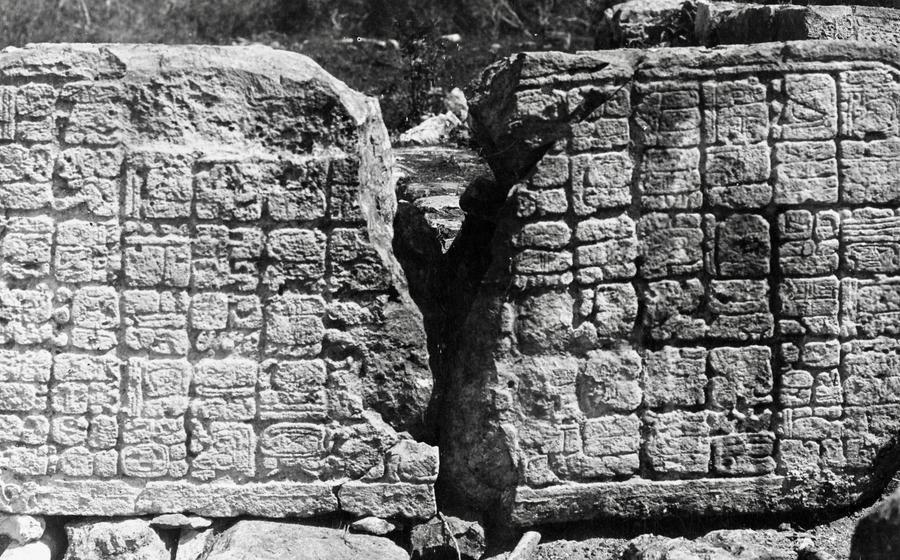
Cenote Xcanche
- Chichen Itza and the Cenote Xcanche: A Journey Through Time
- Decoding the Grandeur of Chichen Itza: El Castillo
- Exploring the Sacred Cenote: A Portal to the Mayan Underworld
- Unveiling the Secrets of the Great Ball Court
- Discovering the Temple of the Warriors and the Group of a Thousand Columns
- Immerse Yourself in the Sounds and Flavors of Chichen Itza
- Tips for Navigating the Crowds and Heat
- Unveiling the History Through Guided Tours
- Capture the Essence of Chichen Itza Through Photography
- Respecting the Cultural Significance and Environment
- Transportation Options to Reach Chichen Itza
- Choosing the Ideal Time to Visit
- Exploring Beyond Chichen Itza: Unveiling the Treasures of the Yucatan
- Suggested Itineraries for a Fulfilling Visit
Chichen Itza and the Cenote Xcanche: A Journey Through Time
Nestled amidst the lush greenery of Mexico's Yucatan Peninsula lies one of the world's most iconic archaeological wonders, Chichen Itza. This ancient Mayan city, with its towering pyramids, intricate temples, and vast plazas, holds an allure that transcends time. Just a short distance away, the Cenote Xcanche, a natural sinkhole with crystal-clear waters, invites visitors to delve into the depths of Mayan culture and history.
Chichen Itza, once the thriving capital of the Mayan empire, was renowned for its architectural prowess, advanced mathematical and astronomical knowledge, and intricate religious beliefs. The city's layout and structures align precisely with celestial events, demonstrating the Mayans' deep understanding of cosmic cycles.
The Cenote Xcanche, on the other hand, held profound religious significance for the Mayans. They believed it to be a portal to the underworld, a place of communication with the gods and ancestors. Artifacts and remains found within the cenote reveal the rituals and offerings conducted by the Mayans to honor their deities and seek guidance.
To fully immerse yourself in the majesty of Chichen Itza and the spiritual essence of the Cenote Xcanche, careful planning is essential. Allocate ample time to explore both sites, allowing yourself to absorb their individual wonders and the profound connection they share. As you embark on this journey through time, remember to respect the cultural heritage and the delicate environment that surrounds these extraordinary places.
Decoding the Grandeur of Chichen Itza: El Castillo
The architectural marvel of Chichen Itza, the pyramid known as El Castillo (or Kukulcan), stands as a testament to the ingenuity and astronomical prowess of the ancient Mayans. Towering over the site, its imposing structure is a symbol of their religious beliefs and devotion to the gods.
El Castillo served as a sacred temple and an astronomical observatory, aligning precisely with the movements of the sun and stars. Its four sides feature 365 steps, corresponding to the days of the year, further emphasizing its connection to celestial cycles.
One of the most captivating spectacles associated with El Castillo is the mesmerizing light and shadow displays during the spring and autumn equinoxes. As the sun rises and sets, the shadows cast by the pyramid's corners create the illusion of a serpent descending or ascending the staircase, a phenomenon known as the "Serpent's Descent."
Witnessing this awe-inspiring sight is a unique and unforgettable experience, attracting visitors from around the world. It serves as a reminder of the profound connection between the Mayans and their natural surroundings, as well as their deep understanding of astronomy and mathematics.
Exploring the Sacred Cenote: A Portal to the Mayan Underworld
The Cenote Xcanche, also known as the Sacred Cenote, holds a profound significance in Mayan culture and history. It was revered as a portal to the underworld, Xibalba, and a place of communication with the divine. The Mayans believed that cenotes were gateways to the realm of the dead and that offerings made in them would reach their ancestors.
The Cenote Xcanche is a natural sinkhole that formed when the limestone bedrock collapsed, exposing the groundwater below. The cenote is approximately 60 meters in diameter and 20 meters deep, with crystal-clear water that allows for stunning views of the underwater world. The cenote is surrounded by lush vegetation, creating a mystical and tranquil atmosphere.
Within the cenote, visitors can observe a diverse ecosystem of aquatic plants and animals. The water is home to various fish species, turtles, and even crocodiles. The cenote also supports a unique population of blind cavefish that have adapted to the dark environment.
To ensure the preservation of this sacred site, visitors are required to follow certain guidelines. Swimming is not permitted in the Cenote Xcanche, as it is considered disrespectful to the Mayan culture. Visitors can still admire the beauty of the cenote from viewing platforms and take photographs to capture the memories of this extraordinary place.
Unveiling the Secrets of the Great Ball Court
At the heart of Chichen Itza lies the largest ball court in the Americas, a testament to the cultural and sporting significance of the ancient Mayan civilization. With its impressive dimensions, measuring 545 feet in length and 225 feet in width, the Great Ball Court stands as a symbol of the importance of the ball game, known as "pok-ta-pok." This ritualistic sport held deep symbolic meanings, representing the cosmic battle between light and darkness, life and death.
The intricately carved stone walls of the court showcase the artistic prowess of the Mayans. Detailed relief sculptures depict scenes of the game, including players in elaborate costumes and protective gear. The sloping sides of the court, adorned with stone rings, served as goals through which the heavy rubber ball, weighing up to 10 pounds, needed to pass.
The rules and gameplay of pok-ta-pok remain a subject of ongoing debate and speculation. It is believed that teams of seven players competed against each other, using their hips, thighs, and elbows to propel the ball. The game was not merely a sport but a sacred ritual, often associated with religious ceremonies and festivals. The outcome of the game held great significance, with victories symbolizing the triumph of good over evil and ensuring the continued favor of the gods.
Stepping into the Great Ball Court, one cannot help but be awed by its sheer size and grandeur. It invites visitors to imagine the electrifying atmosphere, the cheers of the crowd, and the fierce competition that unfolded within its walls. As you gaze upon the intricate carvings and immerse yourself in the history of the ball game, you will gain a deeper appreciation for the cultural richness and complexity of the ancient Mayan civilization.
Discovering the Temple of the Warriors and the Group of a Thousand Columns
The Temple of the Warriors stands as a testament to the architectural prowess of the ancient Maya. Its imposing structure, adorned with intricate carvings and sculptures, reflects the city's military and political significance. The temple served as a ceremonial center and a place for public gatherings, showcasing the grandeur of the ruling elite.
Adjacent to the Temple of the Warriors lies the awe-inspiring Group of a Thousand Columns, a vast array of stone pillars that once supported a massive roof. This architectural marvel showcases the Maya's mastery of engineering and their ability to create monumental structures. The columns are adorned with bas-reliefs depicting scenes of warfare, daily life, and religious rituals, providing a glimpse into the intricate tapestry of Mayan society.
Exploring these structures allows visitors to delve deeper into the lives and beliefs of the ancient Maya. The Temple of the Warriors and the Group of a Thousand Columns offer a glimpse into the power, artistry, and complexity of this remarkable civilization.
Immerse Yourself in the Sounds and Flavors of Chichen Itza
Beyond its historical significance, Chichen Itza is also a place where you can immerse yourself in the vibrant atmosphere and traditions of the Mayan culture. As you wander through the archaeological site, you'll encounter Mayan artisans selling their handmade crafts and souvenirs. Take some time to browse their colorful textiles, intricate pottery, and finely carved wooden sculptures. These items are not just souvenirs; they are expressions of Mayan creativity and cultural identity.
Indulge in the delicious regional cuisine to fully immerse yourself in the Yucatecan culinary experience. Sample the traditional dishes at one of the many restaurants within the site, tantalizing your taste buds with flavors that blend Mayan and Spanish influences. Try the cochinita pibil, a slow-roasted pork dish, or the panuchos, fried tortillas topped with beans, meat, and pickled red onions. Don't forget to quench your thirst with a refreshing agua fresca, made with fresh fruit and water.
As the sun sets, the site transforms into a stage for traditional Mayan music and dances. Catch a performance by local artists and let the mesmerizing rhythms and graceful movements transport you back in time. These performances offer a glimpse into the rich cultural heritage of the Mayans and provide a unique opportunity to connect with their living traditions.
Tips for Navigating the Crowds and Heat
Chichen Itza is a popular tourist destination, and it can get crowded, especially during the peak season (December-April). To avoid the crowds and heat, plan your visit accordingly. Here are some tips:
-
Visit during the shoulder seasons (May-June and September-October). The weather is still pleasant during these months, but there are fewer tourists. Book your accommodation and tours in advance to secure the best deals.
-
Arrive early in the morning or late in the afternoon. The site opens at 8 am, so aim to arrive as close to that time as possible. You'll have the ruins to yourself for a while before the crowds arrive. Alternatively, visit in the late afternoon when the crowds start to thin out.
-
Take advantage of the visitor facilities. There are restrooms, shops, and restaurants located throughout the site. Take breaks to rest, cool down, and hydrate.
-
Protect yourself from the sun. The sun can be intense in Chichen Itza, so wear sunscreen, a hat, and sunglasses. Drink plenty of water to stay hydrated.
-
Hire a certified guide. A knowledgeable guide can help you navigate the site, avoid the crowds, and provide insights into the history and culture of the Mayans.
Unveiling the History Through Guided Tours
Enhancing your visit to Chichen Itza with a knowledgeable guide is an invaluable experience. These experts not only share their profound understanding of Mayan history, architecture, and symbolism but also bring the ancient ruins to life with captivating storytelling. They can provide insights into the significance of specific structures, the rituals and ceremonies that took place, and the daily lives of the Maya people.
With a guided tour, you'll unravel the mysteries of El Castillo, learn about the intricate carvings on the Temple of the Warriors, and discover the secrets behind the Great Ball Court. Your guide will help you understand the astronomical alignments, the religious beliefs, and the cultural practices that shaped this extraordinary city.
Customizing your tour allows you to explore at your own pace and focus on the aspects that most interest you. Whether you're a history buff, an architecture enthusiast, or simply curious about the Mayan civilization, a guided tour will tailor the experience to your preferences.
Booking a guided tour ensures a comprehensive and enriching journey through time. Immerse yourself in the history, culture, and legacy of Chichen Itza, as you uncover the secrets of this ancient metropolis with the guidance of an expert storyteller.
Capture the Essence of Chichen Itza Through Photography
Chichen Itza's grandeur and mystique are best captured through the lens of a camera. Whether you're a professional photographer or simply an enthusiast, the ancient ruins and natural surroundings offer endless opportunities for stunning photographs.
To capture the essence of Chichen Itza, plan your visit around the lighting conditions. The golden hour, just after sunrise and before sunset, casts a warm glow on the ruins, creating a magical atmosphere. Utilize a tripod to ensure sharp images, especially when shooting in low-light conditions.
Experiment with different angles and perspectives. Capture the vastness of the site by shooting from a distance, then move closer to highlight intricate details. Use leading lines, such as the causeways or staircases, to draw the viewer's eye into the image.
Respect the rules and regulations regarding photography at the site. Some areas may have restrictions on the use of tripods or flash photography. Be mindful of other visitors and avoid blocking their views or disturbing their experience.
Share your captivating images with the world to inspire others to explore this wonder. Use social media platforms or online photography communities to showcase your work and connect with fellow enthusiasts. Your photographs can serve as a testament to the enduring beauty and significance of Chichen Itza.
Respecting the Cultural Significance and Environment
Chichen Itza's historical and ecological significance demands our utmost respect and preservation. As visitors, we have a responsibility to safeguard this timeless treasure. Refrain from touching or climbing on the ancient structures, as their delicate surfaces can be easily damaged. Resist the urge to litter or disturb the wildlife that calls this site home. Embrace responsible and sustainable tourism practices by using designated waste disposal bins and respecting the natural environment. Together, we can ensure that future generations can continue to marvel at the wonders of Chichen Itza. Let's be mindful travelers and leave only footprints in the sands of time.
Transportation Options to Reach Chichen Itza
Navigating the Routes to Chichen Itza: Unveiling the Ancient Wonder
Reaching Chichen Itza, the iconic Mayan metropolis, requires careful consideration of transportation options. For those seeking flexibility and independence, renting a car is an excellent choice. This allows for a self-paced journey, enabling you to explore the site at your leisure and venture beyond to nearby attractions. Alternatively, organized tours from Cancun or other neighboring cities offer convenience and hassle-free travel, with the added bonus of guided commentary. For budget-conscious travelers, public transportation provides a cost-effective alternative, although it may require more planning and flexibility in scheduling. Regardless of your choice, consider the travel time and distance from your starting point to ensure a smooth and stress-free journey to this awe-inspiring ancient wonder.
Choosing the Ideal Time to Visit
When planning your visit to Chichen Itza, timing is crucial for a fulfilling experience. The ideal time to visit is during the shoulder seasons, which fall between May and June and September and October. These months offer several advantages. The weather is generally pleasant, with warm and sunny days but fewer crowds, allowing you to explore the site at your own pace and capture stunning photographs without battling throngs of tourists. Additionally, prices for accommodations and tours tend to be lower during these periods, making it a more budget-friendly option.
In contrast, the peak tourist season from December to April brings with it large crowds and higher prices. While the weather is typically warm and dry during this time, the sheer number of visitors can detract from the tranquility and awe-inspiring nature of the site. If you do decide to visit during this period, be prepared for longer lines and plan accordingly to avoid the busiest hours.
Finally, consider special events or festivals that may align with your visit. The equinoxes in March and September are particularly notable, as they showcase the architectural brilliance of Chichen Itza when the sun aligns perfectly with the pyramid, El Castillo, creating a captivating display of light and shadow. Other cultural events and festivals throughout the year offer unique opportunities to immerse yourself in the region's rich traditions and heritage.
Exploring Beyond Chichen Itza: Unveiling the Treasures of the Yucatan
While Chichen Itza remains the star attraction, the surrounding region offers a wealth of hidden gems waiting to be discovered. Just a short drive away, the colonial city of Valladolid beckons with its colorful streets, charming architecture, and lively central square. History buffs can delve deeper into the Mayan legacy at nearby ruins such as Ek Balam, renowned for its well-preserved frescoes, or Coba, where they can climb the towering Nohoch Mul pyramid for panoramic views of the jungle canopy.
Nature enthusiasts will find solace in the region's many cenotes, natural sinkholes filled with crystal-clear water. Cenote Ik Kil, located a mere 5 miles from Chichen Itza, captivates visitors with its stunning turquoise waters, lush vegetation, and refreshing swimming spots. For a truly immersive experience, combine your exploration of Chichen Itza with a rejuvenating dip in this hidden oasis.
The Yucatan Peninsula overflows with opportunities for adventure and discovery. Whether you seek colonial charm, ancient ruins, or natural wonders, this region has something to offer every traveler. Craft a well-rounded itinerary that balances relaxation and exploration, ensuring a memorable journey through the heart of the Mayan world.
Suggested Itineraries for a Fulfilling Visit
Crafting a Well-Rounded Itinerary for Chichen Itza Exploration
When planning your visit to Chichen Itza, customizing your itinerary based on your interests and time constraints is essential. Here are some suggested itineraries to help you make the most of your trip:
One-Day Itinerary for a Quick Exploration:
- Start early to avoid the crowds and heat.
- Prioritize visiting the main attractions: El Castillo, the Temple of the Warriors, and the Great Ball Court.
- Enjoy a traditional Mayan lunch at one of the local restaurants within the archaeological site.
- Take some time to explore the surrounding areas and admire the natural beauty of the region.
Two-Day Itinerary for a Deeper Dive:
- Dedicate the first day to exploring the main attractions of Chichen Itza, including El Castillo, the Temple of the Warriors, and the Great Ball Court.
- On the second day, venture beyond the main complex to discover lesser-known areas, such as the Group of a Thousand Columns or the Temple of Kukulcan.
- Visit the nearby Cenote Xcanche for a refreshing swim and to learn about its cultural significance.
Additional Days for a Comprehensive Experience:
- Explore the colonial city of Valladolid, located just 45 minutes from Chichen Itza, to immerse yourself in its rich history and culture.
- Visit other nearby Mayan ruins, such as Ek Balam or Coba, to gain a deeper understanding of the ancient Mayan civilization.
- Discover the natural wonders of the Yucatan Peninsula by exploring cenotes, caves, and beaches in the region.
- Create a balanced itinerary that combines cultural exploration, adventure, and relaxation to make your trip to Chichen Itza truly unforgettable.

